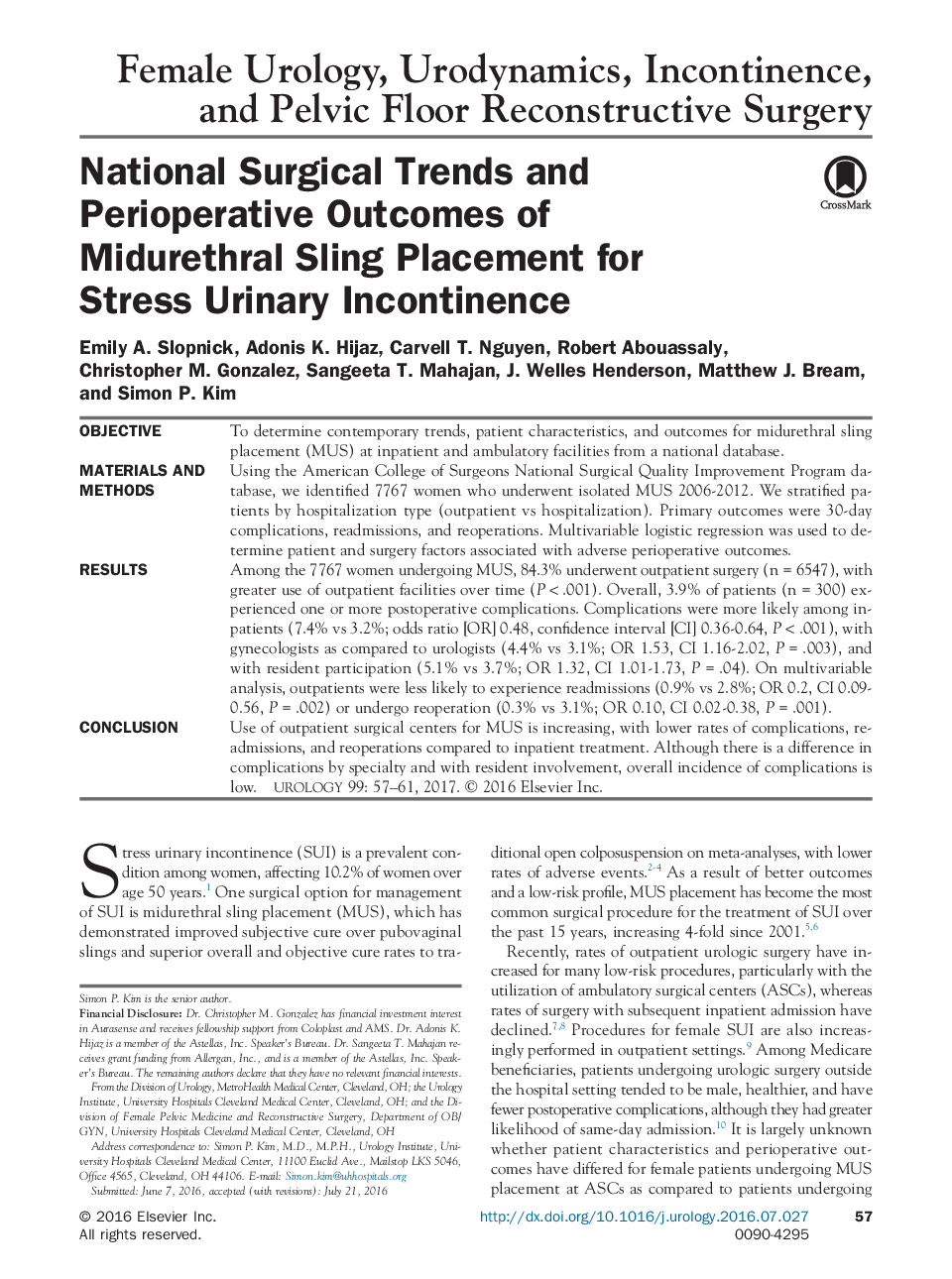| Article ID | Journal | Published Year | Pages | File Type |
|---|---|---|---|---|
| 5688643 | Urology | 2017 | 5 Pages |
ObjectiveTo determine contemporary trends, patient characteristics, and outcomes for midurethral sling placement (MUS) at inpatient and ambulatory facilities from a national database.Materials and MethodsUsing the American College of Surgeons National Surgical Quality Improvement Program database, we identified 7767 women who underwent isolated MUS 2006-2012. We stratified patients by hospitalization type (outpatient vs hospitalization). Primary outcomes were 30-day complications, readmissions, and reoperations. Multivariable logistic regression was used to determine patient and surgery factors associated with adverse perioperative outcomes.ResultsAmong the 7767 women undergoing MUS, 84.3% underwent outpatient surgery (nâ=â6547), with greater use of outpatient facilities over time (Pâ<â.001). Overall, 3.9% of patients (nâ=â300) experienced one or more postoperative complications. Complications were more likely among inpatients (7.4% vs 3.2%; odds ratio [OR] 0.48, confidence interval [CI] 0.36-0.64, Pâ<â.001), with gynecologists as compared to urologists (4.4% vs 3.1%; OR 1.53, CI 1.16-2.02, Pâ=â.003), and with resident participation (5.1% vs 3.7%; OR 1.32, CI 1.01-1.73, Pâ=â.04). On multivariable analysis, outpatients were less likely to experience readmissions (0.9% vs 2.8%; OR 0.2, CI 0.09-0.56, Pâ=â.002) or undergo reoperation (0.3% vs 3.1%; OR 0.10, CI 0.02-0.38, Pâ=â.001).ConclusionUse of outpatient surgical centers for MUS is increasing, with lower rates of complications, readmissions, and reoperations compared to inpatient treatment. Although there is a difference in complications by specialty and with resident involvement, overall incidence of complications is low.
